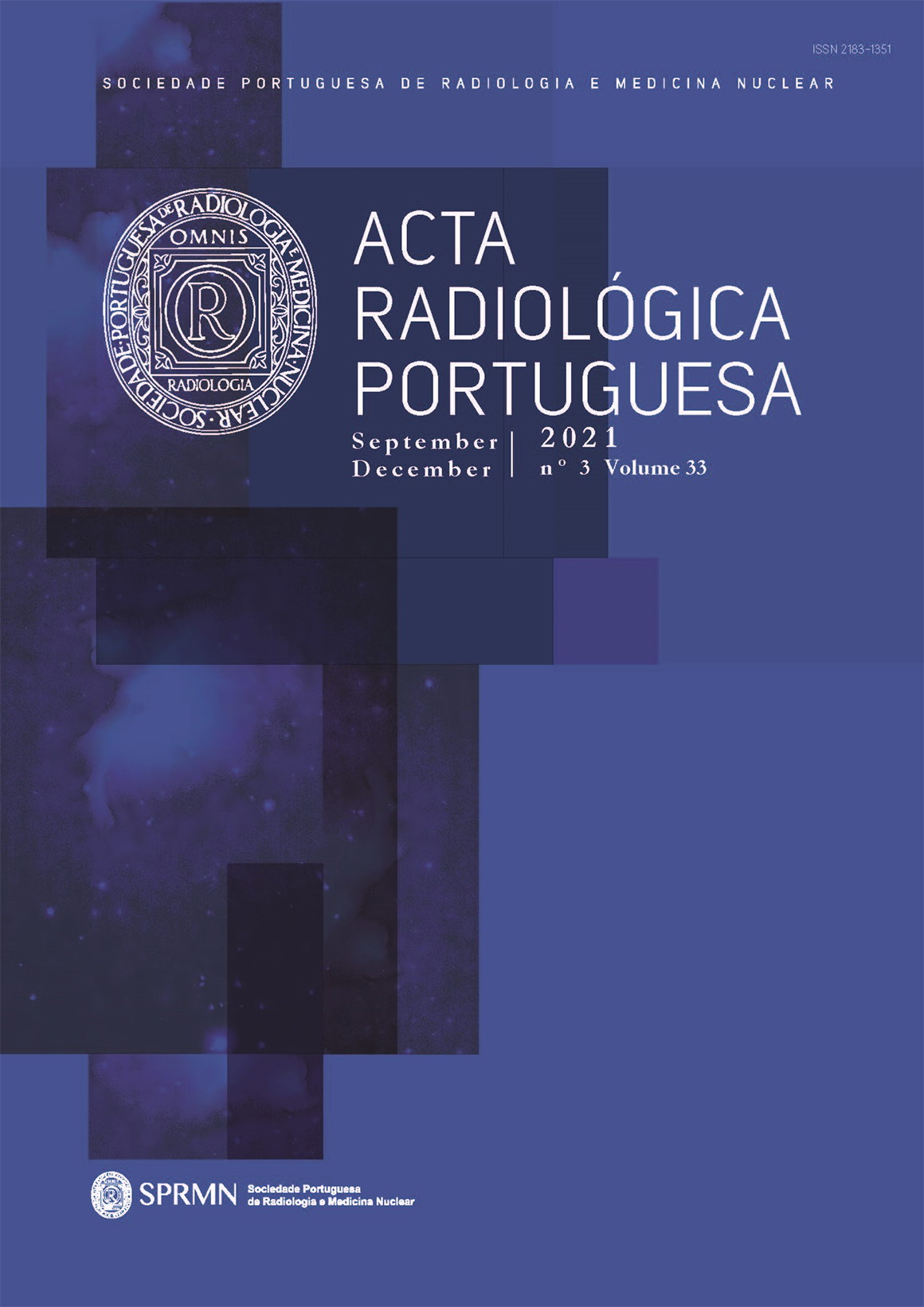Vacuum assisted breast biopsy: diagnostic and therapeutic role
DOI:
https://doi.org/10.25748/arp.25553Abstract
Background
Vacuum-assisted breast biopsy (VAB) plays a diagnostic and therapeutic role. This study aims at the imaging and anatomopathological correlation of lesions submitted to VAB.
Material and methods
We carried out a retrospective study, which included 221 BAV (guided by stereotaxis or ultrasound) performed at Portuguese Institute of Oncology in Lisbon (IPOLFG) during 15 months. We reviewed the imaging characteristics of the lesions, the respective anatomopathological diagnoses in VAB and in available surgical specimens.
Results / Discussion
Imaging characteristics: microcalcifications(60,2%); nodules(33%); architectural distortion(4.5%) and density asymmetries(2.3%). Anatomopathological diagnosis: benign lesions(44.8%); lesions of uncertain malignant potential/B3 lesions(22.2%), including 23 papillomas(10.4%); ductal carcinomas in situ/DCIS(23.5%); DCIS(38-54.3%);invasive carcinoma not otherwise specified/IC(9.5%). Cases submitted to surgery at IPOLFG=31.3% with the respective VAB diagnosis: benign lesions(2,8%); B3 lesions(15.7%); DCIS(38-54.3%); CI(27.1%). In benign and B3 lesions we didn`t found upgrade in surgical specimens. Of the 19 papillomas with follow-up, only 1 was not completely excised with BAV. Of the DCIS, 5.2% had no residual lesion in the surgical specimen and we identified upgrade in 21,1%, half for microinvasive carcinoma and half for IC, one with a 3 mm axillary metastasis. When coexistence of IC and CDIS in BAV, we registered downgrade in 14.3% (no invasion in surgical specimen).
Conclusions
The low percentage of cases submitted to surgery post-VAB proves its efficacy in benign lesions and B3 lesions. In DCIS submitted to surgery at IPOLFG, we verified no residual tumor in 5.2% and upgrade in 21,1% of the cases, in half for microinvasive carcinoma.
Published
Issue
Section
License
CC BY-NC 4.0


